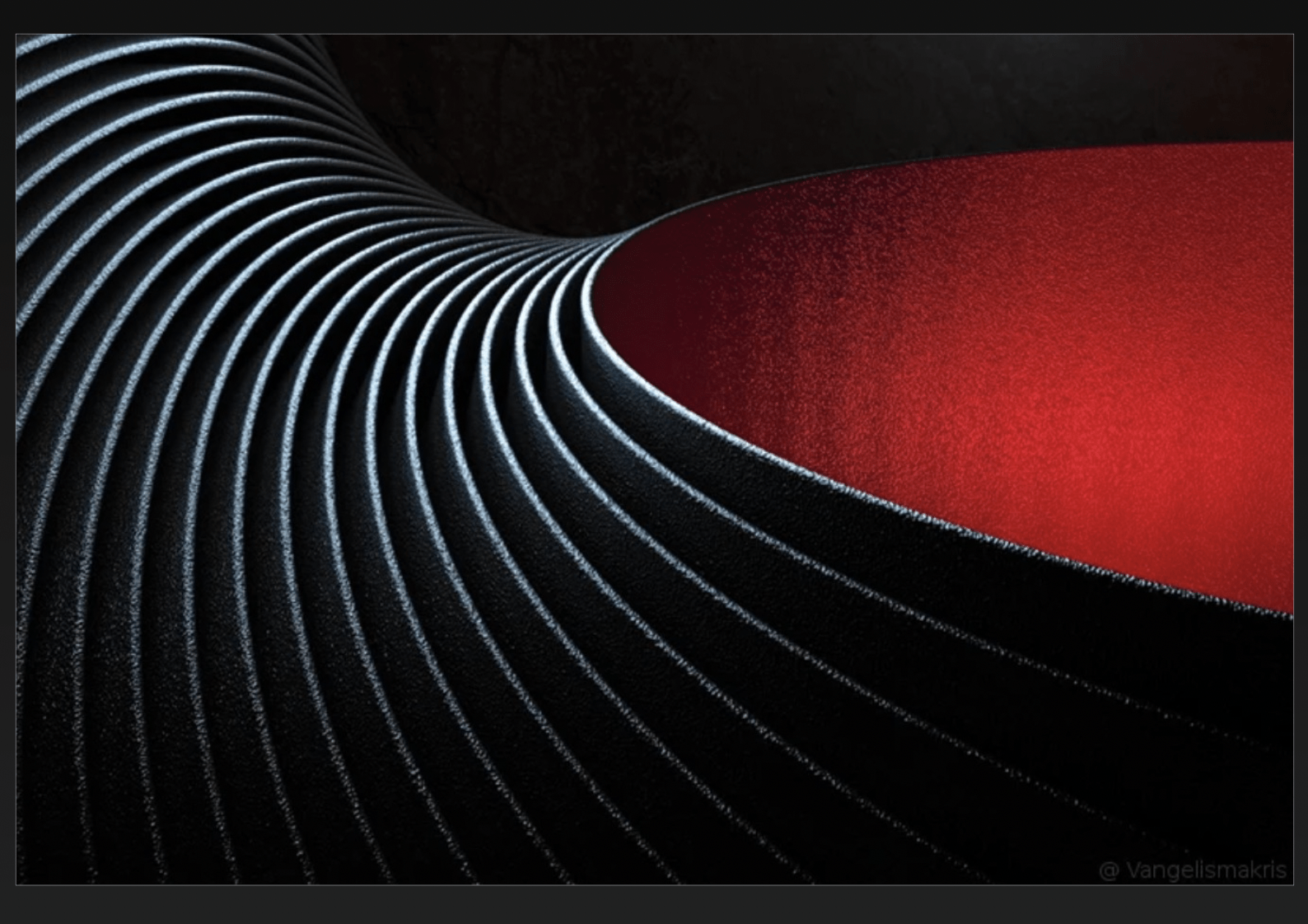Formal Elements of Photography: The phrase “formal elements” mean the most basic and important features that something has, and in photography, they are line, shape, repetition, texture, tone, and focus. Those 6 elements are the basic building blocks of photography that should be considered for every photo.
Line: In photography, there are certain objects that act as a line. They have directions, lengths, and thicknesses, and are either geometric or organic. They often lead directions and show outlines in a photograph
.
This photo contains many curved lines, and they seem to create a direction from far away to near the camera around the red area. However, only the line on the rightmost of the photo seems to outline the red area. The lines show movement and energy as it extends a long way and has a varied tone in them.
Shape: In photography, shapes can be either geometric or organic. The shape in photography could be varied in size, shade, and amount, and they often have close relationships with other lines and shapes.

This photo contains both geometric and organic shapes, creating a chaotic yet artistic photograph. The geometric shapes include triangles, rectangles, rhombuses, and trapezoids. The organic shapes contain circles, curves, and other soft turns. They relate to each other by being stacked together or next to each other.
Repetition/Pattern: Patterns in photography are illustrated as the same shape or line happening in a specific order repeatedly. Patterns create rhythms, which brings predictability to a photograph and exaggerates the odd ones out.

The monks create a pattern that repeats in the photograph except for 1 monk that is turning his head. I see echoes as the legion of monks does not end within the frames of the photograph.
Texture: Texture is the impression of how it will feel to the touch of the objects in the photograph. The texture could be presented with shadows, notable bumps, or a coarse surface.

If I could touch the surface, it would likely feel crumbly. The objects in the photograph seems to have textures as it has shadows and is clearly 3-dimensional.
Value/Tone: The tone is how colored or lighted a photograph is. For example, a dark photograph will have a different tone than a bright photograph. In photography, the tone can vary depending on specific photographs, and the tone will also vary on the same photograph to direct the viewer’s attention.

There is a range from dark to light. The darkest point is at the bottom of the photograph and the lightest is at the center of it.
Focus: The Focus is a point in a photograph that is clearer than the rest of the photograph, which directs the viewer’s attention.

The photograph is very blurry and out of focus. The flower at the front is relatively the clearest and te orange background is the most blurred.
An image could indeed show more than one formal element at a time. For example, in the photograph below, the formal elements of lines, shapes, tone, and pattern blended well together and created a great photograph. When lines intersect on the same plane, shapes form, and the brightness of every photograph results in differences in tone. The focus and patterns could add on to a good photograph by creating movement and attracting attention from viewers.










